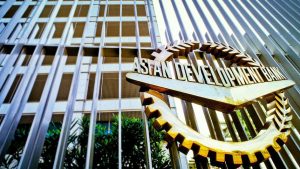Powering the country toward a clean energy future

Plans and developments in the energy sector are valuable in powering the country with renewable energy (RE) and reducing greenhouse gas emissions (GHG) to help create a sustainable future. This means an imperative role to take on by the country’s Department of Energy (DoE).
In its Nationally Determined Contribution — the efforts for reducing GHG emission and adapting to climate change impacts — submitted to the United Nations Framework Convention on Climate Change (UNFCCC), the Philippines targets to reduce its emissions by 75% by 2030 (72.29% of which is conditional commitment, while the remaining 2.71% is unconditional).
Renewables can help reduce emissions and empower a clean energy future. And in leading the country towards such a future, the DoE has laid out the blueprint and targets in the Philippine Energy Plan (PEP) 2020-2040.
Under the Clean Energy Scenario (CES), the updated blueprint aims to increase the share of RE in the power generation mix to 35% by 2030, then 50% by 2040.
According to the PEP, renewable capacity expanded over 40% to 7,617 megawatts (MW) in 2020 from the 5,284-MW capacity in 2008, when the RE Act was passed.
Enabling policies and market support mechanisms that have been established have expedited the rapid RE deployment, as stated on the PEP.
Among the issuances made was the Renewable Energy Market Rules, which indicated the conclusion of policy mechanisms provided under the RE law. Also launched was the Philippine Renewable Energy Market System (PREMS).
The Green Energy Auction Program (GEAP) was also issued, which provides additional market options through the auction of 2,000-MW renewable capacities from qualified RE suppliers. It seeks to foster a competitive setting in the country for RE supply.
Meanwhile, enabling the Green Energy Option Program (GEOP) gave end-users the option to select RE resources as their energy source.
Consumers are also empowered to be prosumers through the Net-Metering Program (NMP), which enables end-users to install up to 100 kilowatt (KW) of RE systems to lower their electricity bills and sell the surplus to the grid.
Another issuance to further encourage a more significant renewable resource utilization is the Open and Competitive Selection Process.
The DoE said they acknowledge renewables’ role in the government’s low-emission development strategy to contend with the challenges of climate change, energy security, and clean energy access. Hence, it “constantly works on setting aspirational targets, pushing stakeholders to respond to the call for cleaner, sustainable energy, and ensuring equitable access to affordable energy.”
Aligned with the PEP, the updated National Renewable Energy Program (NREP) 2020-2040 is also formulated, which works on providing a “cost-sensitive” and “demand-responsive” national program on RE.
In support of the NREP target, the RE road map brings in vital directions and deliverables for driving the renewables’ expansion in the energy system.
Included in the RE road map is accelerating RE positioning. Some of the medium-term activities are to establish Enhanced NMP in off-grid areas; execute GEAP; roll out GEOP; and study on Off-Shore Wind Development.
The road map also seeks to develop a conducive environment for businesses and reliable and efficient infrastructure, as well as promote and enhance research, design, and development agenda.
Renewable developments
2020-2040 Philippine Energy Plan
Progress in some plans set under the PEP has been made in expanding renewables in the country.
Last June, the DoE unveiled the results of the first auction round of GEAP, which saw a 98.3465% success rate. An RE capacity of 1966.93 MW has been committed to supply energy from 2023 to 2025 at a competitive price that is lower than or equal to the Green Energy Auction Reserve prices established by the Energy Regulatory Commission (ERC).
In the first round of GEAP, the DoE awarded 19 contracts. Of these contracts, 11 are in Luzon, which includes five solar contracts, four wind, and two hydropower. Two contracts, one wind and one solar, were awarded in Visayas; while four hydropower contracts and one each for solar and biomass were awarded in Mindanao.
RE developers who did not win in the first round or were not able to submit offers are encouraged by the DoE to take part in the succeeding auction rounds, since the GEA will be conducted on a yearly basis.
The department is now preparing to conduct the second GEA by June next year.
Moreover, in the shift to an increased RE share in the mix, natural gas is seen as a transition and flexible fuel that could support renewable-based generation. Having no indigenous replacement for natural gas supply from Malampaya, which concession would expire in 2024 and projected to be depleted by 2027, the DoE is focused on importing liquefied natural gas (LNG) through the development and operation of LNG receiving facilities.
So far, the DoE has approved the application of seven LNG import terminal projects. The department said in a statement that the Linseed Field Power Corp. is “on track” to complete its first integrated LNG import terminal in Batangas City, which is scheduled for commissioning in March 2023 and then the commercial operation in April. FGEN LNG Corp.’s LNG terminal is also scheduled for commissioning in March next year, while its commercial operation is set in June.
In addition, last November, the DoE announced that it is crafting an Executive Order (EO) to “strengthen and rationalize” the regulatory framework for the immediate development of offshore wind (OSW), given the interest in OSW potential among foreign and local investors.
This proposed EO would set out the regulatory framework for creating a “robust” OSW industry as well as comprises a long-term vision, infrastructure development, investments, and sound policies, according to DoE Secretary Raphael P.M. Lotilla.
As of November, 42 OSW wind service contracts have been awarded.
Last month, Alterenergy Holdings Corp. and Shell Overseas Investment have sealed their partnership for the development of the Calavite Passage OSW Project. Meanwhile, PetroGreen Energy Corp., along with Copenhagen Energy, has formed three special purpose vehicles for its OSW projects.
“I am optimistic that with the recent amendment of the Implementing Rules and Regulations (IRR) of the Renewable Energy Act of 2008, more foreign investors will come in to partner with our local companies,” Mr. Lotilla said.
The DoE is also looking into emerging technologies and marine renewable energy technologies.
Considering that diversifying the mix is an important step toward energy security, Michael O. Sinocruz, director for DoE’s Energy Policy and Planning, said at the BusinessWorld Economic Forum last month that the government is looking at harnessing alternative fuels such as green hydrogen and ammonia.
Meanwhile, Marissa P. Cerezo, director of the Renewable Energy Management Bureau, said earlier this month that the country’s clean energy strategy would count in harnessing ocean energy.
Renewable-generating facilities made up 28.9% of the total installed capacity in 2021, lower than its 32% share in 2016, according to the DoE’s Energy Accomplishment Report 2016-2022. This translated to 7,965 MW, with hydropower accounting for the highest share with 13.7% or 3,781 MW. Geothermal followed with 7% (1,928 MW), while solar significantly rose to 1,325 MW. Biomass and wind have a combined share of 3.4% with 489 MW and 443 MW, respectively.
“The RE-based capacity grew by 13.9% from 6,994 MW in 2016 to 7,965 MW in 2021, indicating the power sector’s gradual transition towards the utilization of cleaner energy fuels,” the DoE also noted. — Chelsey Keith P. Ignacio




